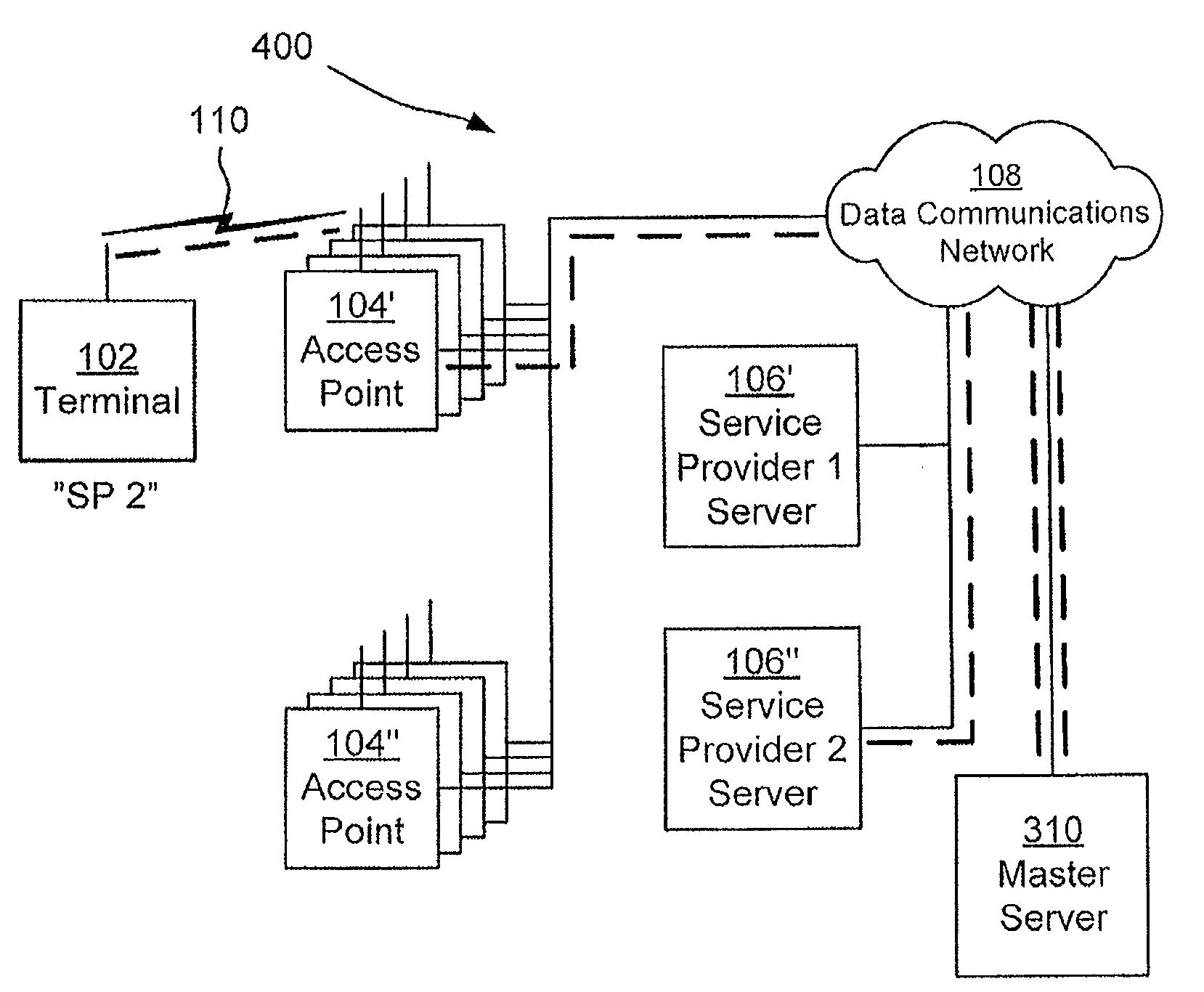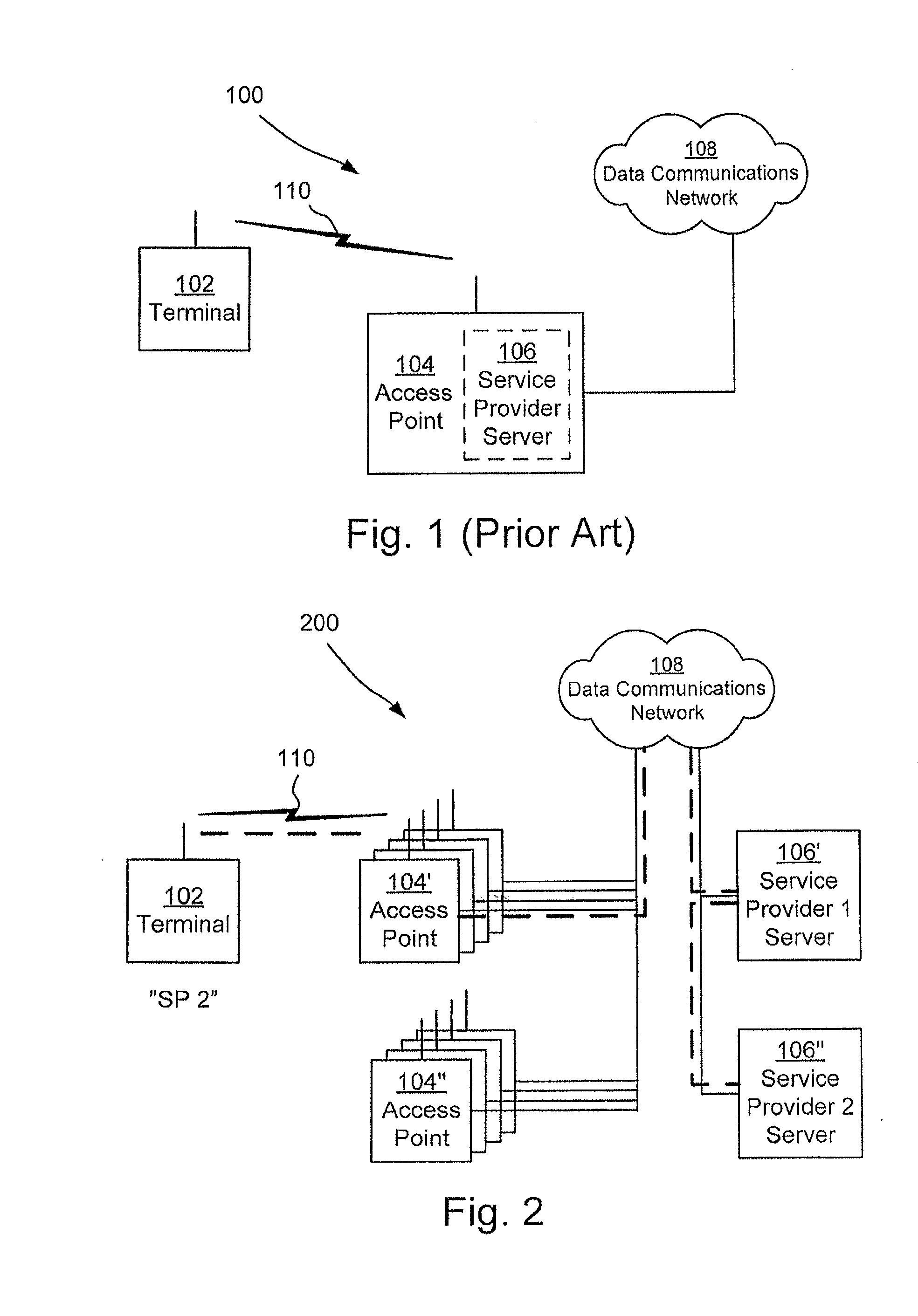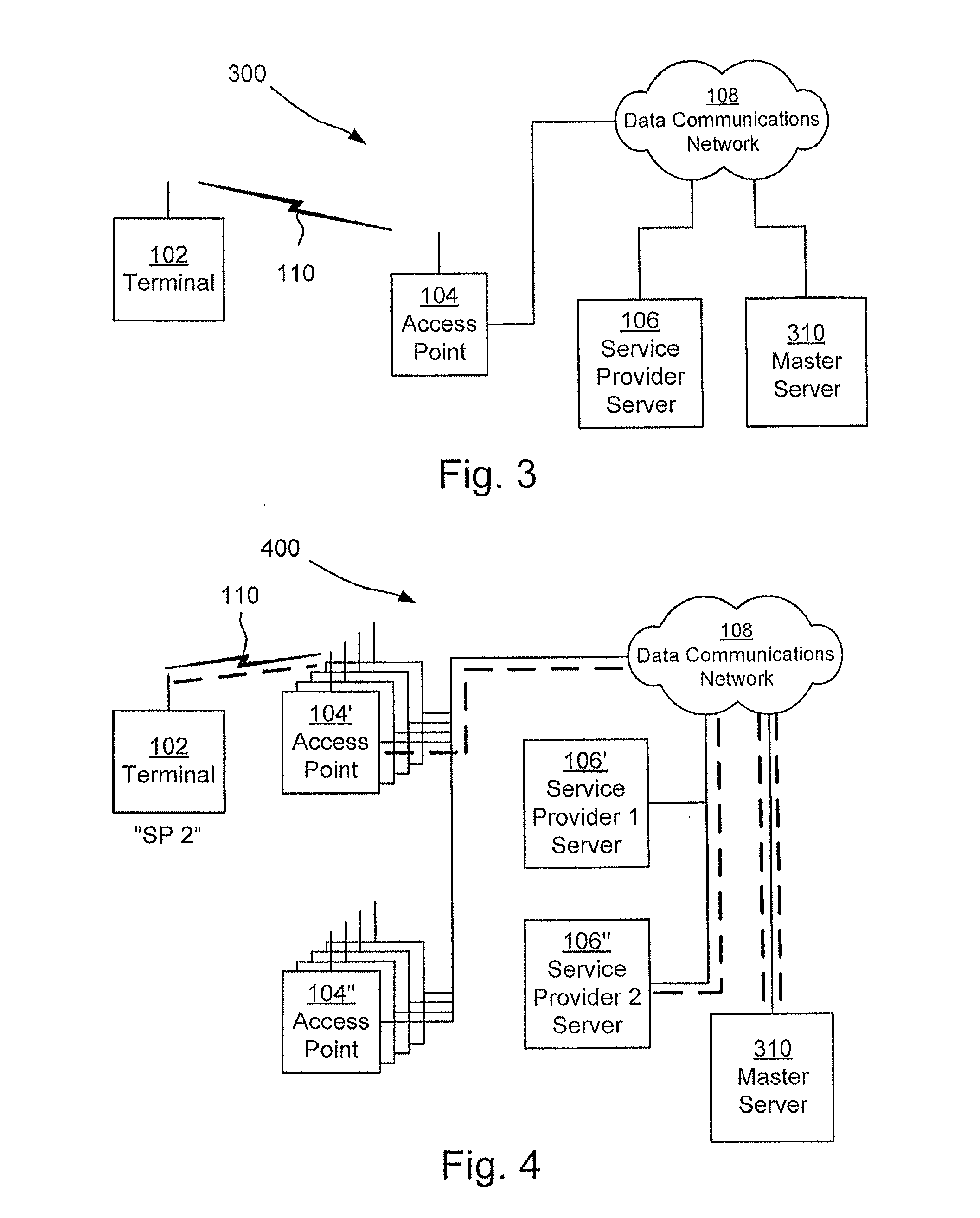Access point, a server and a system for distributing an unlimited number of virtual IEEE 802.11 wireless networks through a heterogeneous infrastructure
a heterogeneous infrastructure and access point technology, applied in the field of data communications networks, can solve the problems of etc., and achieve the effect of low overall network capacity, high cost per bit, and high backhaul cos
- Summary
- Abstract
- Description
- Claims
- Application Information
AI Technical Summary
Benefits of technology
Problems solved by technology
Method used
Image
Examples
Embodiment Construction
[0051]In general like numbers refer to like elements throughout the disclosure. A first communications system 100 according to prior art is illustrated in FIG. 1. The prior art system 100 comprises a terminal 102, a data communications network 108 and an access point 104 associated with a service provider server 106. The terminal, which for example may be a computer, a personal digital assistant, a mobile communications device or the like, is arranged to be wirelessly operatively connected to the data communications network via the access point as illustrated by reference numeral 110. The data communications network may be a local area network, or a wide area network, and may provide access to different services such as Telephony, Television, and the Internet. The access point may be a wireless router. The service provider server is associated with the service provider of the terminal. In general the system 100 may comprise a plurality of terminals and access points.
[0052]A terminal...
PUM
 Login to View More
Login to View More Abstract
Description
Claims
Application Information
 Login to View More
Login to View More - R&D
- Intellectual Property
- Life Sciences
- Materials
- Tech Scout
- Unparalleled Data Quality
- Higher Quality Content
- 60% Fewer Hallucinations
Browse by: Latest US Patents, China's latest patents, Technical Efficacy Thesaurus, Application Domain, Technology Topic, Popular Technical Reports.
© 2025 PatSnap. All rights reserved.Legal|Privacy policy|Modern Slavery Act Transparency Statement|Sitemap|About US| Contact US: help@patsnap.com



